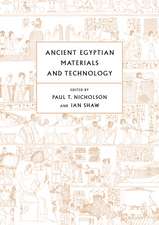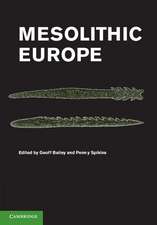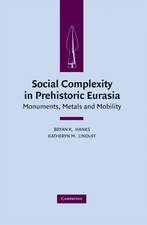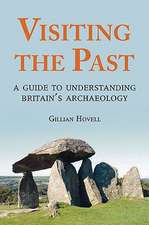Archaeology and the Pan-European Romanesque: Debates in Archaeology
Autor T. O'Keefeen Limba Engleză Paperback – 12 sep 2007
Din seria Debates in Archaeology
- 24%
 Preț: 170.07 lei
Preț: 170.07 lei - 24%
 Preț: 170.50 lei
Preț: 170.50 lei - 28%
 Preț: 466.81 lei
Preț: 466.81 lei - 14%
 Preț: 164.50 lei
Preț: 164.50 lei - 17%
 Preț: 169.62 lei
Preț: 169.62 lei - 13%
 Preț: 248.61 lei
Preț: 248.61 lei - 18%
 Preț: 169.08 lei
Preț: 169.08 lei - 14%
 Preț: 163.42 lei
Preț: 163.42 lei - 30%
 Preț: 566.67 lei
Preț: 566.67 lei - 22%
 Preț: 594.35 lei
Preț: 594.35 lei - 24%
 Preț: 169.27 lei
Preț: 169.27 lei - 14%
 Preț: 169.27 lei
Preț: 169.27 lei - 24%
 Preț: 169.62 lei
Preț: 169.62 lei - 14%
 Preț: 170.69 lei
Preț: 170.69 lei - 13%
 Preț: 247.98 lei
Preț: 247.98 lei - 24%
 Preț: 168.74 lei
Preț: 168.74 lei - 24%
 Preț: 169.62 lei
Preț: 169.62 lei - 14%
 Preț: 169.79 lei
Preț: 169.79 lei - 14%
 Preț: 247.22 lei
Preț: 247.22 lei - 18%
 Preț: 253.64 lei
Preț: 253.64 lei - 18%
 Preț: 169.44 lei
Preț: 169.44 lei - 14%
 Preț: 178.22 lei
Preț: 178.22 lei - 13%
 Preț: 247.98 lei
Preț: 247.98 lei - 17%
 Preț: 170.32 lei
Preț: 170.32 lei - 17%
 Preț: 170.07 lei
Preț: 170.07 lei - 17%
 Preț: 169.71 lei
Preț: 169.71 lei - 13%
 Preț: 149.87 lei
Preț: 149.87 lei - 14%
 Preț: 162.79 lei
Preț: 162.79 lei - 24%
 Preț: 169.71 lei
Preț: 169.71 lei - 14%
 Preț: 169.88 lei
Preț: 169.88 lei - 24%
 Preț: 170.07 lei
Preț: 170.07 lei - 24%
 Preț: 170.07 lei
Preț: 170.07 lei -
 Preț: 169.62 lei
Preț: 169.62 lei - 14%
 Preț: 169.62 lei
Preț: 169.62 lei - 14%
 Preț: 169.88 lei
Preț: 169.88 lei - 13%
 Preț: 149.87 lei
Preț: 149.87 lei - 30%
 Preț: 567.99 lei
Preț: 567.99 lei - 14%
 Preț: 170.32 lei
Preț: 170.32 lei - 23%
 Preț: 248.17 lei
Preț: 248.17 lei - 17%
 Preț: 169.71 lei
Preț: 169.71 lei - 30%
 Preț: 537.55 lei
Preț: 537.55 lei - 18%
 Preț: 169.27 lei
Preț: 169.27 lei - 13%
 Preț: 247.70 lei
Preț: 247.70 lei
Preț: 171.76 lei
Preț vechi: 206.71 lei
-17% Nou
Puncte Express: 258
Preț estimativ în valută:
32.87€ • 35.15$ • 27.40£
32.87€ • 35.15$ • 27.40£
Carte tipărită la comandă
Livrare economică 18 aprilie-02 mai
Preluare comenzi: 021 569.72.76
Specificații
ISBN-13: 9780715634349
ISBN-10: 0715634348
Pagini: 144
Dimensiuni: 135 x 216 x 10 mm
Greutate: 0.31 kg
Editura: Bloomsbury Publishing
Colecția Bristol Classical Press
Seria Debates in Archaeology
Locul publicării:London, United Kingdom
ISBN-10: 0715634348
Pagini: 144
Dimensiuni: 135 x 216 x 10 mm
Greutate: 0.31 kg
Editura: Bloomsbury Publishing
Colecția Bristol Classical Press
Seria Debates in Archaeology
Locul publicării:London, United Kingdom
Notă biografică
Tadhg O'Keeffe is Senior Lecturer in Archaeology, University College Dublin. He is the author of five books, including Romanesque Ireland: architecture and ideology in the twelfth century (2003).
Descriere
Romanesque is the style name given to the art and architecture of Europe in the 11th and 12th centuries. This work subjects 'the Romanesque' to a theoretically-informed, archaeological inquiry. It deconstructs the constructs of 'Romanesque' and 'Europe', and reveals alternative strategies for interpreting Romanesque's constituent material.













